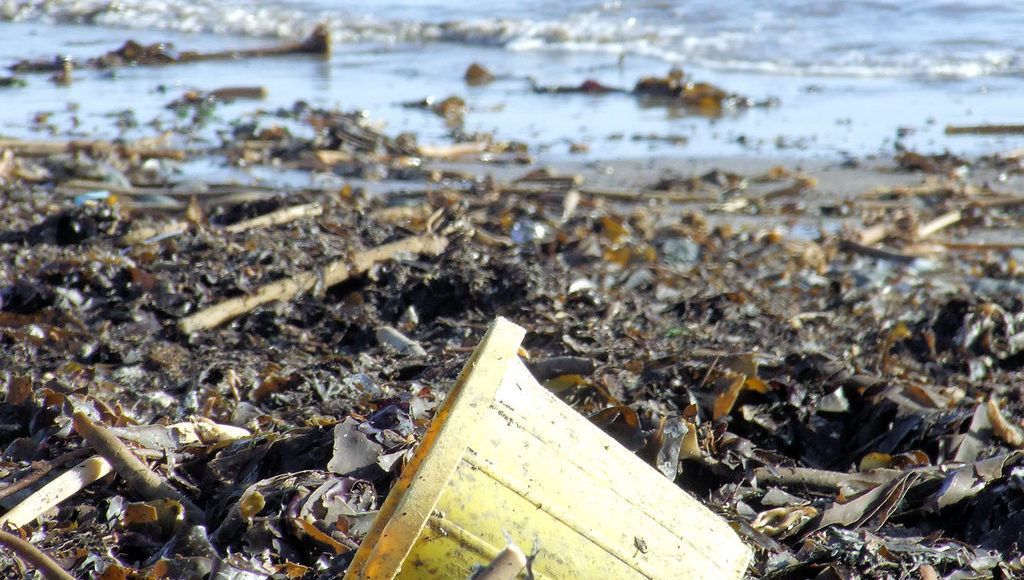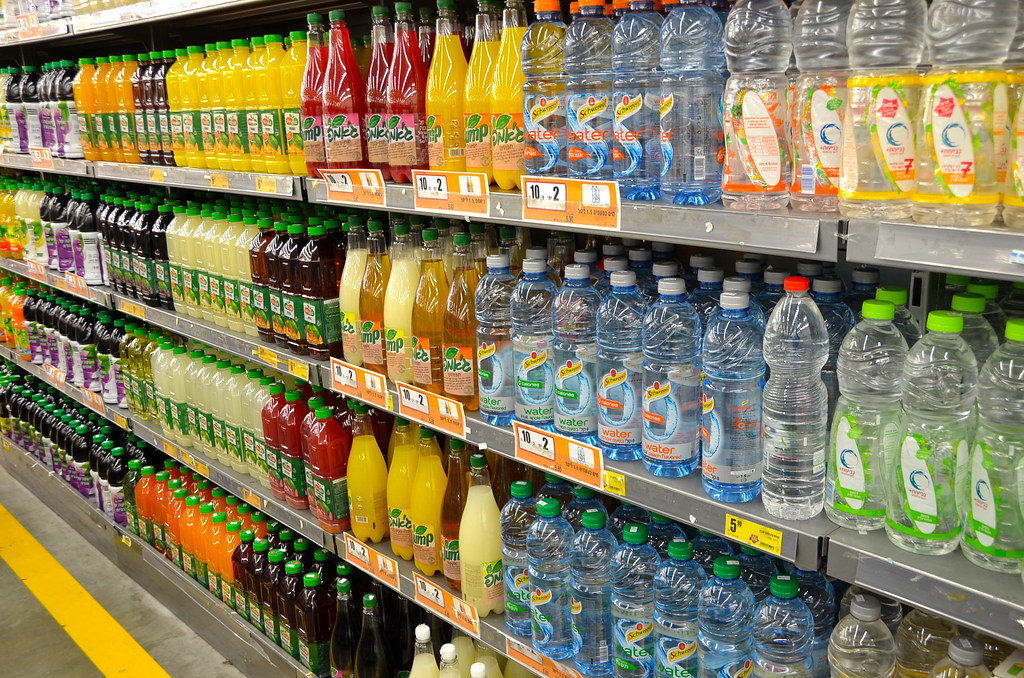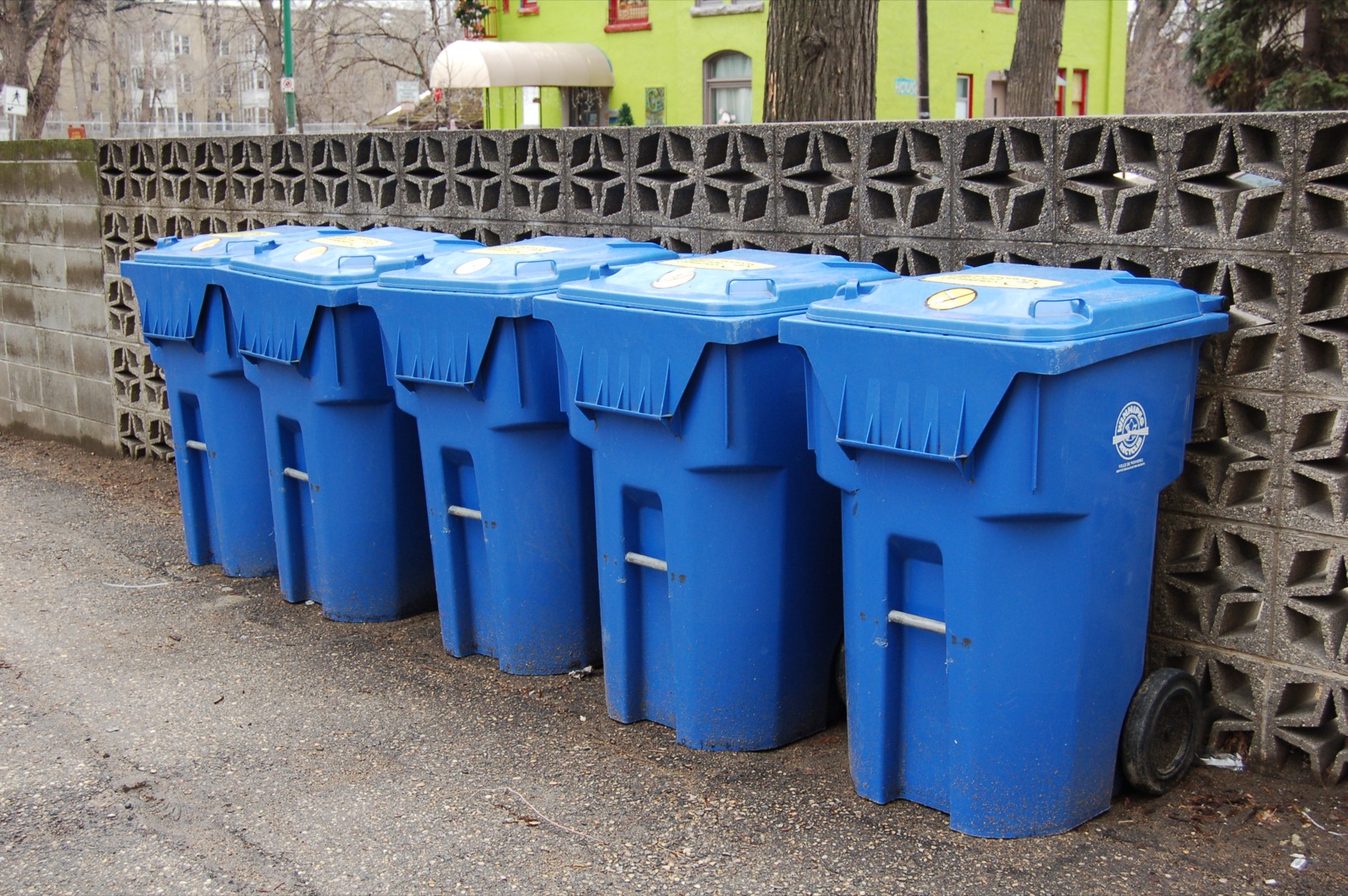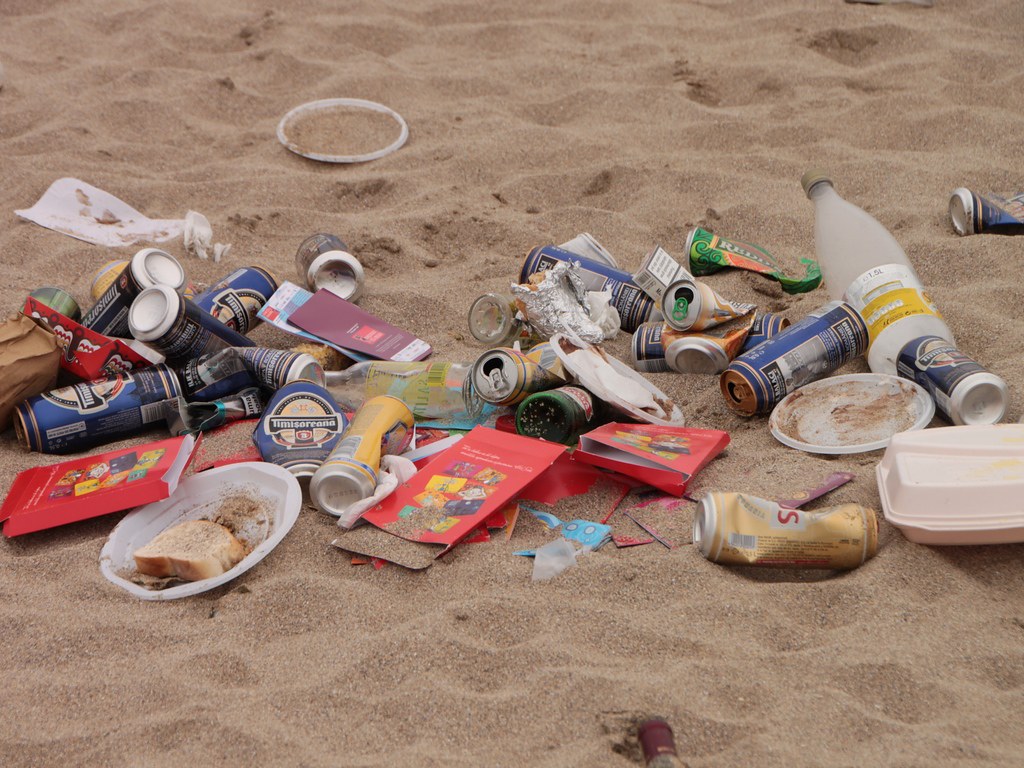It’s Time to Hold Big Business Responsible for Their Trash
 "Yellow Bucket" by alister667 is licensed under CC BY-NC-SA 2.0
"Yellow Bucket" by alister667 is licensed under CC BY-NC-SA 2.0
The idea first arose from some late-night Instagram diving that resulted in a stream of posts glorifying a “plastic-free” life. In theory, it’s simple enough: stop buying plastic. Suddenly, you’re in Home Goods trying to find pots, pans, comforters, and storage for your first dorm room, and everything is either made of plastic, packaged in plastic, or both.
It’s easy to dismiss how ingrained plastic has become in our lives. At first glance, you may think of your Ziploc bags, your Starbucks coffee, or the building collection of plastic grocery bags in your pantry. But in reality, the destructive single-use form we see today originated not too long ago.
The single-use plastics concept presented a brilliant get-rich-quick scheme that witnessed the rise of plastic in our daily lives, especially in sectors like the food and beverage industries. If big business could convince consumers to throw items away—essentially, manufacture products designed for the landfill—then consumers would buy more stuff. Plastic litres of soda, plastic gallons of milk, and plastic water bottles now span an entire wall at the grocery store, usually opposite plastic bags of chips and other single-use snack packs. Yet, companies faced one critical barrier as they rolled out single-use plastics and products: the prevailing consumer mindset placed an emphasis on reusing or re–purposing what you already have.

NPR’s podcast, The Litter Myth, illustrates the true magnitude of this cultural shift from a consumer’s perspective: “you are so used to this thing being reusable. That’s what makes sense. But then they had to teach people that this is something that you can throw away.” Carefully designed advertisements that purported the convenience of single-use products like paper plates and Solo cups gave rise to a new-age consumer who believes one-and-done is the new normal. In the 1960s, chewing gum companies like Trident and Wrigley took advantage of plastic to replace natural ingredients like chicle or mastic; however, you won’t see plastic listed under the ingredients. Polyvinyl acetate and synthetic rubbers are all FDA-approved “gum bases.” The gum you accidentally touched under the chair definitely won’t be biodegrading in the next few centuries, never mind the fact that you’re chewing plastic. The increasing popularity of fast food chains like McDonalds and Burger King in the 20th century were accompanied by plastic cutlery, plastic toys, and styrofoam cups that usually take up a permanent residence on the side of the road. You would be hard pressed to find a product in a beauty store like Sephora or Ulta that is not packaged in plastic designed to be thrown away, like a mascara tube or shampoo bottle. These big businesses were so successful in altering the consumer mindset that “by the early 1950s, Americans started to see everything as garbage, including the glass bottles they used to reuse over and over again,” according to NPR’s Rund Abdelfatah.
It comes as no surprise in the age of Greta Thunberg and the #CleanSeas movement that plastic has done irreversible damage to the world we live in. Beaches are littered with straws and candy wrappers, the oceans are host to massive expanses of trash like the Great Pacific garbage patch. You can even find plastic at the bottom of the Mariana Trench.
“But I recycle!”

Which is great—really. Unfortunately, the brutal reality is that only 9% of recycled materials are actually recycled. Another 12% is incinerated, even though burning plastics releases toxic gases and harmful ashes. These shocking statistics exist because waste designated for recycling, unless it is collected by the blue box program, does not legally have to be recycled. So, even when consumers attempt to dispose of waste responsibly, corporations cannot be trusted to fulfill their part of the deal. As individuals, we just don’t have the financial or technological resources to ensure the safe and responsible disposal of waste, nor can we trust big business to do it for us. Where does that leave us?
The other 79% of trash makes its way into landfills or the environment. Plastic is in the water, the air, and maybe even your cup of tea. According to a study by the Department of Chemical Engineering at McGill University, “steeping a single plastic tea bag at brewing temperature (95 °C) releases approximately 11.6 billion microplastics and 3.1 billion nanoplastics into a single cup of the beverage.” If you’re not already deeply disturbed by the amount of plastic in your morning pick-me-up, a study done by the University of Newcastle found that you could be ingesting, on average, a credit card worth of plastic each week. While there is no absolute conclusion on the effects of plastic accumulation in the body yet, it’s hard to imagine that it would be beneficial; precursory studies suggest we are at risk for widespread health risks like increased toxicity and dangerous metabolic fluctuations due to the accumulation of microplastics in the body.
So while the campaign to ditch plastic straws is a step in the right direction, we need to acknowledge the true extent to which plastic has infiltrated our modern world. Straws are certainly bad for the turtles, but the 46% of the Great Pacific garbage patch that is made up of abandoned and discarded fishing nets is significantly worse.
As the volume of plastic pollution in our environment has risen since single-use products began to saturate the market, big business has been forced to acknowledge the amount of trash they produce. Massive, multinational corporations such as Unilever, which owns popular brands such as Ben & Jerry’s, Dior, and TRESemmé, have implemented transparent sustainability goals for their products. Starbucks has partnered with Pentatonic, a company that recycles waste to create new products. In addition, Starbucks has been working to replace their iconic green straws and encourage recycling. Despite mounting pressure from consumers and companies like Unilever and Starbucks, the majority of the market refuses to take responsibility for the mass volume of products they have manufactured that will never biodegrade and have eschewed all responsibility for their products once they leave the factory.
The plastic-free movement and the anti-straw fad are the by-products of individuals desperate to save the planet. Movements like these, in combination with climate strikes and environmental cleanups, mark the beginning of a critical shift in the consumer mindset.

On an individual scale, avoiding plastic means you can ditch your pricey Amazon Prime subscription. Their plastic-wrapped products are shipped in layers of plastic bubble packaging or with Styrofoam peanuts. Moreover, a company that sells itself on the promise of delivering all manner of items to your front stoop in 48 hours perpetuates an unthinkable carbon footprint in the process. What point is there to buying a bamboo toothbrush only to have it arrive wrapped in layers of plastic packaging?
This is where reversing the narrative around single-use plastics becomes critical: we need to start thinking about how to reuse the products we already have. For example, I cook pasta and buy sauce in a glass jar, which I clean out and then use to store the leftovers. I keep the jars, and re–purpose them for storing other leftovers or smaller items. The jars are also perfect for shopping at “bulk stores,” where I can fill my reusable containers from bulk bins. When you arrive, you weigh out your empty jars and write the tare weight on top and only pay for the product you buy. So not only do you reduce your plastic use, you have the option to only buy as much as you need. As we continue to demand more sustainable products and reduce single-use plastic usage, big business will respond accordingly.
Although it’s important to reduce our individual impact, we also need to hold big business responsible for the unsustainable products they continue to make. Corporations, unlike individuals, possess the necessary monetary and physical means to properly dispose of single-use plastics and create sustainable alternatives on a macroscopic scale. There’s even a financial incentive: in Canada alone, the value of unrecovered plastics materials is valued at $7.8 billion. According to a report by the World Economic Forum, $80 billion worth of plastic packaging material is lost globally each year. With consumer demand shifting, there has been a recent wave of zero-waste grocery stores that encourage consumers to bring their own reusable containers and only buy as much as they need from bulk refill stations. Brands like Adidas have also jumped on board by collecting ocean plastic and creating sustainable products while simultaneously cleaning up the environment.
It’s time to place the burden of saving a planet we are not responsible for destroying onto the back of big business. If action against climate change truly needs to start with the people, we should begin by calling out the corporations that perpetuate the damage in the first place.
Edited by Albert Gunnison
